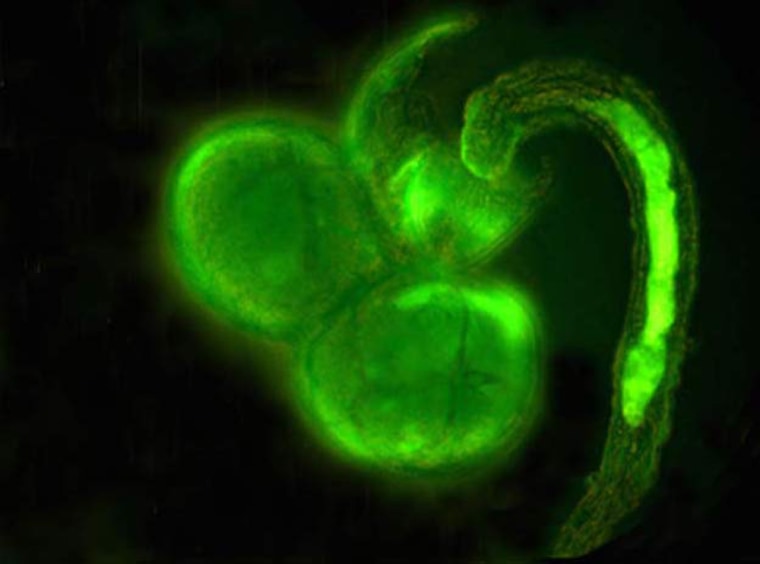While most young male wasps are just bags of loosely organized cells, their sterile sisters develop quickly into slender snake-like shapes, grow huge jaws and start chomping on their little brothers.
The sterile sisters' lethal sibling rivalry is downright spiteful, but unusual genetics, not to mention the opportunity to keep living, means that fertile sisters benefit from the nasty behavior in more than one way.
After a mother wasp from the genus Copidosoma lays two eggs — one male and one female — into a host (for instance, the egg of a moth), these eggs divide clonally, producing a thousand genetically identical sisters and a thousand genetically identical brothers. The sisters, therefore, are more closely related to each other than they are to their brothers.
Limited resources in the host will only support about half of these larvae as they grow into adult wasps. So it is the threat of starvation that creates strong competition between the siblings and drives the infertile sisters to eat their brothers, according to recent research detailed in the April issue of the journal American Naturalist.
"Although the genes for this spiteful behavior find themselves at an evolutionary dead-end in the sterile larvae, copies of these genes are passed onto future generations because they are also present in the clonal sisters, who do survive and reproduce," said evolutionary biologist Andy Gardner of Oxford University in the United Kingdom.
Altruism hypothesis
For a century, the sterile wasps have puzzled scientists.
They were discovered in 1906 by Italian entomologist, Filippo Silvestri who suggested that they used their enormous jaws to chew up the insides of their host to release extra nutrients for their brothers and sisters. However, later researchers hypothesized that the sterile larvae were defending their siblings from competitor species living in the same hosts and nicknamed the wasps "soldier larvae."
The traditional view has been that these sterile individuals are altruists, giving up their own reproduction for the good of their siblings.
Skewed sex ratios
Only recently, said Gardner, have researchers noticed that the sterile wasps readily attack their own siblings. In addition, most soldiers are female, and they most often attack their brothers.
"We found that the bizarre genetics of these wasps means that brothers value their sisters more than sisters value their brothers, and so if sterile larvae function for the good of the group then it should be brothers who more willingly make the sacrifice," Gardner said. "As it happens, most sterile larvae are female, and so this supports the view that they have a primarily spiteful function."
The end result of all of that sisterly spite is a very skewed sex ratio. Usually 80 percent of the individuals emerging from the host are female.
"Luckily, that’s more than enough males to go around," Gardner told LiveScience.
